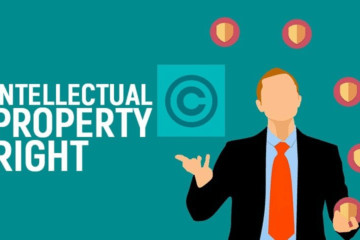
This article is written by Anjali of Chaudhary Charan Singh university, Ghaziabad
Abstract
A legal protection in the form of design and patent is provided to the individual and more for their invention. Design patent provide protection against the appearance of the article whereas utility patent gives protection against process and manufacturing of article. The government give right of monopoly to inventor for the utilization, copying and selling their invention for a limited period of time. Here we are going to deal with what are the ways of piracy of registered design and which remedy are provided to the inventor. This article aims to explain the design and patent with the help of case law. Also provide the amendment of patent and patentable invention for which inventor can apply for the registration
Keywords
Design, application, piracy of registered design, remedies of piracy, patent, amendment, patentable invention, case laws
Introduction
Intellectual Property Rights cover invention of Design, Copyright, Trademark and Patent by human being. Design and patent are creativity of human which is need to be protected by law by way of act. The unique pattern and process of doing some works are require to be register for their creative effort. These are protected from use by another person without the consent of innovator, it also gives some exclusive right to the person who create such design.
Definition of design
Design is a two dimensional that may contain the features of line, pattern or color and three-dimensional which consist of shape of the article that are drawn for some specific plan.
According to section 2(d) of the design act 2000
“Design” means only the features of shape, configuration, pattern, ornament or composition of lines or colours applied to any article whether in two dimensional or three dimensional or in both forms, by any industrial process or means, whether manual, mechanical or chemical, separate or combined, which in the finished article appeal to and are judged solely by the eye; but does not include any mode or principle of construction or anything which is in substance a mere mechanical device, and does not include any trade mark as defined in clause (v) of sub-section (1) of section 2 of the Trade and Merchandise Marks Act, 1958 (43 of 1958) or property mark as defined in section 479 of the Indian Penal Code (45 of 1860) or any artistic work as defined in clause (c) of section 2 of the Copyright Act, 1957 (14 of 1957).
The authenticity of the design must be check on the following characteristics:
- Duration of punishment is enhanced in the case of infringement of registered design,
- In the case of originality of article, quality of the substance must be kept in mind,
- Law regarding delegation of case from district court to high court or supreme court is also mention in the act,
- Delegation of power from one controller to another controller and from one examiner to another examiner is provided in the act,
- Applicability of Absolute Novelty can be judged on the ground of publication of the prior articles,
- It also abolished the confidentiality of the registered design for two years.
Application of design
Application for design shall be made for registration to the patent officer along with fees in the prescribed manner. The class of design must be mention in the application for registration. Then the controller give application to the examiner to check the Absolute novelty of design. Section 5 of Design Act defines the procedure of application,
- Verify by the controller in the patent office the design on the ground of prior publication or it is not against any public policy or morality,
- Application must be file in the patent office to the controller in the prescribed manner along with the fees,
- Design must be registered in any particular class and if it is not decided by applicant than it could be done by controller,
- Controller may accept the application or reject it. Then applicant aggrieved for such refusal may apply to any high court,
- When there is any default or neglect part occur on behalf of the applicant which is not ratified with in a prescribed period then such application shall not be registered,
- A date of registration of design is when the application is made
Piracy of Registered Design
When any design is made it is required to be register which is copywrite of design and if such design is used by another person for his own benefit unlawfully it is known as infringement(piracy) of registered design.
Piracy of registered design is considered as infringement of design in India as per Design Act, 2000. Piracy (infringement) of registered design define in section 22 of the Design Act, 2000.
Piracy of registered design take place when any person: –
- unethically tries to sale or duplicate the design with the authorized permission of the inventor,
- Threaten to reveal the design in public through publication,
- Import of design which is not already in circulation.
Remedies of Piracy of Registered Design
When any person unlawfully sale, duplicate or import design without permission of registered owner, then such person shall be liable to
- Penalty of not exceeding twenty-five thousand rupees for piracy of design.
But total amount for penalty shall not exceed rupees twenty-five thousand rupees.
- Inventor can apply to the court to claim damages and injunction of design from further use.
such cases shall not be conduct below the district court.
Case laws
TTK Prestige Ltd vs. KCM Appliances Pvt. Ltd. [CS(COMM)697/2022]
Appeal of plaintiff
- Plaintiff’s cooker and lid design is distinctive, innovator make the copyright of the design.
- Defendant uses the design of plaintiff without lawful permission which had been registered as “pressure cooker with container and lid for household”.
- According to plaintiff the defendant product name “smart spillage control” is the uniqueness already shown in the plaintiff product which is infringed by the defendant.
Writing statement of defendant
- Defendant give full description of his product and make comparison of the same with plaintiff product.
- Defendant states that plaintiff launch his product online before the registration of the product. So, plaintiff cannot claim the copyright of product.
Judgment
- The hon’ble court decide that the video issued by the plaintiff show different design of product. So, there is no case related to publication before the registration of the product. Defendant seek to apply section 19(1)(b) and section 4(b) for uploading video on You Tube by the plaintiff,
- Court provided injunction to the plaintiff as to stop the manufacturing and selling of the infringed pressure cooker,
- Defendant is required to give the detail of the same to the court within two weeks.
Patent
During ancient time there was no concept of patent in existence but at the time of Mughal any extraordinary work was appreciated by wajifa (scholarship).
Patent means an authority given to the one or more inventors to use invention and to exclude other from the use of invention for a limited period of time given by the government.
Patent can be grant for article or substance and also for the method and process of manufacturing of product by one or more individuals.
Patent provide safeguard against the unlawful users and give monitory value to the invention. Any person to whom patent communicated and who is the importer of patentable invention is not the first inventor.
Patent which can be accepted as patentable invention by the government that are;
- Non obviousness
An article for patent must not possible for person to do through ordinary skill sets. Invention must fulfill the certain criteria to get itself patent.
For Example: – any type of ordinary skill cannot be patent like a repairer is good at repairing thing which is not possible for ordinary person but it can also be done by any other repairer. So, it can’t be patent.
- Novelty
The invention must be solution to new problem in the technology field or in the process of manufacturing of products. If inventor apply for patent which is already in existence or not anything new it cannot be patent.
For Example – U.S.A. apply for the patent of the turmeric product through U.S.A. patent officer but The Indian Council of Scientific and Industrial Research (CSIR) submit for objection because of there is no newness in the product. In Indian book turmeric was already present before the enforcement of such council.
- Usefulness
If the invention is not useful notwithstanding along with uniqueness or new in nature these types of invention become useless to patent and protected. Humanity must be benefited from the invention made by the individual.
As per section 2(m) of Patents Act, 1970
“patent” means a patent granted under this Act and includes for the purposes of sections 44, 49, 50, 51, 52, 54, 55, 56, 57, 58, 63, 65, 66, 68, 69, 70, 78, 134, 140, 153, 154 and 156 and Chapters XVI, XVII and XVIII, a patent granted under the Indian Patents and Designs Act, 1911.
Invention which are not come under the criteria of patentable invention;
- Skill used for the process and manufacturing of article by individual is not patentable,
- Invention which could be harmful for mankind,
- Basic process of agriculture and horticulture,
- Process and method of checking some application in technology or any machinery for manufacturing,
- Basic discovery and formulation in the scientific work,
- Any formulation of medicine useful for mankind, process of surgery or any other type of treatment of human being or animals.
Case Law
Bajaj Auto Ltd. V. TVS Motors Comp. Ltd. (2007) Madras High Court
Bench of Justice B.N. Aggarwal & Justice P.P. Noalekar
In this case law Bajaj auto is plaintiff and TVs motors defended.
The case was related to using of twin spark plug technology inside the internal combustion engine by the defendant which is already in use by the plaintiff. Plaintiff filled case against TVS Motors for infringement of patent of technology.
Judgements
during the proceeding of the case interim judgment granted in the favour of applicant are temporary injunction for obstructing the use of technology or invention prescribed by the plaintiff. Damages were also provided for the infringement of the patent.
A decade-old case come to an end by mutual settlement between the parties in the year 2019 where they agree to withdraw all the proceedings pending before and free each other from all the claims and liability.
Atomic Energy a Non – Patentable Invention
As per section 4 of Patent Act, 1970, “no patent shall be granted in respect of an invention relating to atomic energy falling within Sub-Section (1) of Section 20 of The Atomic Energy Act, 1962.
Some Process and Manufacturing are Patentable Invention:
- Food, medicine or drugs can be use or capable of being use,
Provided other than drugs and medicine define in sub-clause (v) of clause (1) of sub-section (1) of section 2 and without prejudice any other provision in this act and deal in a manner provided in
Chapter IVA. [1]
In Patent Amendment Act, 2005 abolish the patent of process of food, medical or drugs but product itself is under the criteria of product patent
- Substance made of chemical process cannot be patentable but manufacturing and process involved for making substance can be patentable.
Person who can apply for the patent
As per sub-section (1) of section 6 of Patent Act, 1970, Any person
- Declare that he is true and first inventor of the original invention,
- Declare himself legal representative of the decreased person for which first inventor before his death was making such application.
Provided that Inventor can be an individual person or more than that.
Patent Amendment Act, 2005
India is a part of World Trade Organisation (WTO). Being a part of WTO, India signed the Trade Related Aspect of Intellectual Property Rights (TRIPS) which also make amendments in patent act in 2005.
Effects of Amendment are Indian Pharmaceuticals company Reverse engineering help Indian company to grown in the absence of product patent. Now domestic or local pharma companies could invest in research and development of new drugs for disease, MNC’s will contribute in economic growth through technology.
Conclusion
If the company have portfolio related to intellectual property, then it restricts other companies from entering into manufacturing of same kind of product. Patent is a monopoly right given to the person who make any novel invention for the benefit of the mankind. Patent inspires other to make more invention and give protection to person who already registered in the Patent Act, 1970. There are limitations and exceptions for inventor while making registration of intellectual property which they must keep in mind. Intellectual property work by way of licensing, foreign direct investment and joint ventures.
Any kind of intellectual property registration there is a procedure mention in the act that need to be follow, to protect product and services from others unlawful use. After making intellectual property right act there is need to amended from time to time to prevent abuse of power and irrational thinking.
References
- Piracy of registered design- https://blog.ipleaders.in/piracy-of-registered-designs-and-remedies/
- Case law piracy of registered design https://www.lexology.com/library/detail.aspx?g=3e54ce79-da60-4abb-b7cf-e36de1fb2f31
- Patent Amendment Act, 2005 https://www.readcube.com/articles/10.2139/ssrn.1435186
[1] Taken from the bare act




0 Comments